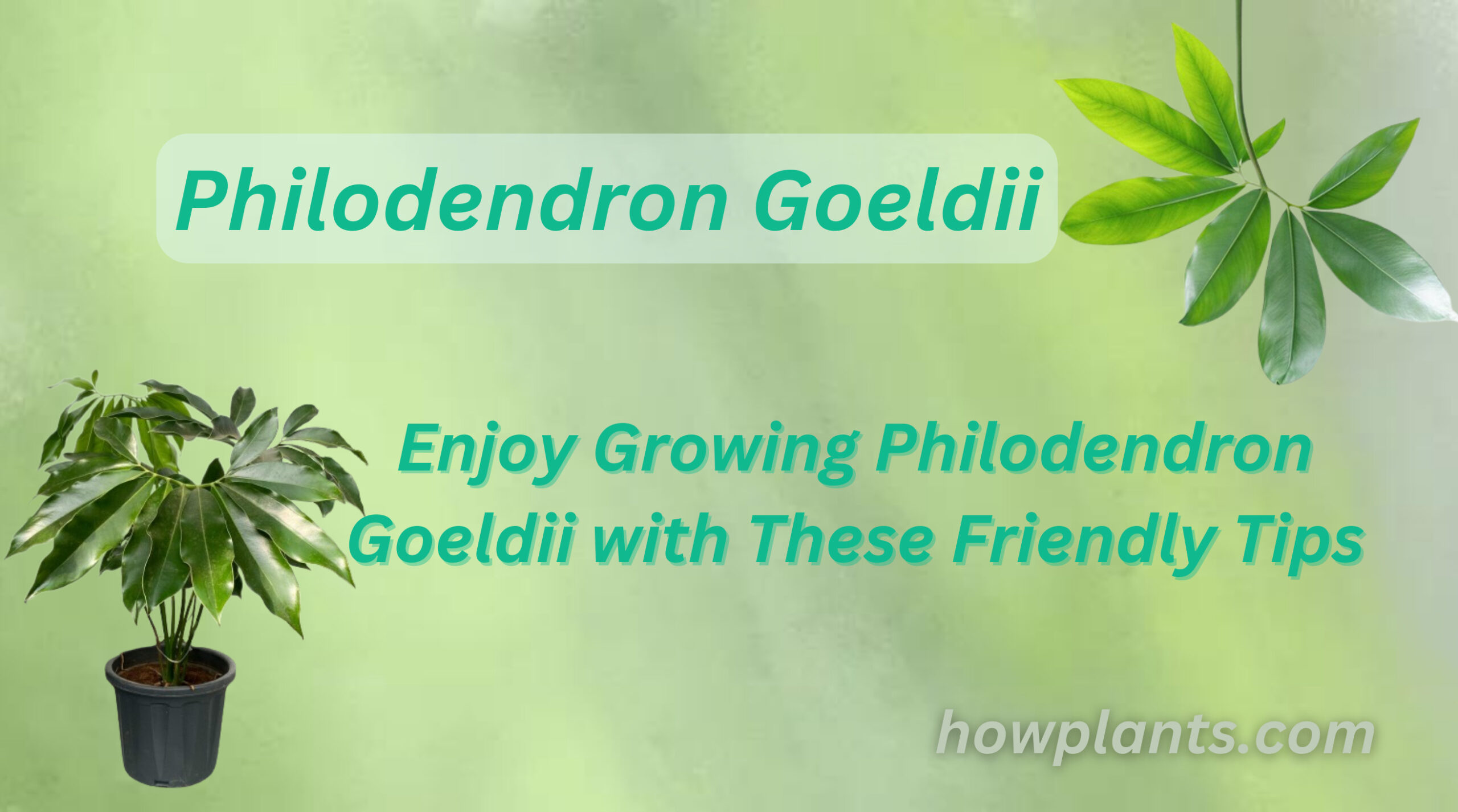Are you looking for an easy-to-care-for houseplant that can bring a touch of the tropics to your home? If so, consider growing Philodendron Goeldii. This species of Philodendron is known for its unique foliage and vibrant leaves, making it a great addition to any home. In this blog, we will provide you with some friendly tips to help you enjoy growing Philodendron Goeldii. Read on to learn more.
The Philodendron goeldii fun bun is a newly developed cultivar of the common philodendron. It is a compact, bushy plant with a profusion of small, colorful flowers. The fun bun is perfect for small spaces and is easy to care for. This species of Philodendron is known for its unique foliage and vibrant leaves, making it a great addition to any home and office.
What is Philodendron Goeldii?
Philodendron goeldii is a species of philodendron. It is native to the Philippines and Sri Lanka. It is a slow-growing plant that can reach a height of up to 3 feet. The leaves are ovate-shaped and have a pointed tip. The flowers are pink and have a yellow center.
Other Names: Goeldii plant is also commonly known by the names of Philodendron argentatum, Philodendron japonicum, thaumatophyllum spruceanum and Philodendron.
Height: The philodendron goeldii size can vary depending on the growing conditions, but they typically grow to be around 12 feet tall and 10 feet wide.
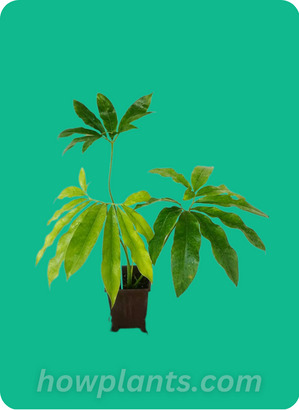
| CHARACTERISTICS | PHILODENDRON GOELDII |
|---|---|
| Origin |
|
| Scientific name |
|
| Other names |
|
| Family name |
|
| Shape of leave |
|
| Color of leaves |
|
| Plant type |
|
| Best placement in house |
|
| Soil |
|
| Growth rate |
|
| Temperature |
|
| pH |
|
| Humidity rate |
|
| Watering conditions |
|
| Toxicity status |
|
| Symptoms of toxicity |
|
| Fertilizer |
|
| Pests |
|
Origin and Family of Goeldii fun bun
Philodendron goeldii fun bun was first discovered by Richard Spruce in 1851. It is also known as finger leaf and belongs to genus Thaumatophyllum, and the Araceae family. The Philodendron goeldii is a beautiful houseplant that can be found in many homes across the United States. It originated in Brazil, Venezuela and Colombia. Having specie name of Thaumatophyllum spruceanum.
Philodendron Fun bun Morphology
The leaves of the philodendron fun bun are shaped like a heart. They are broad and flat, with a slightly curved edge. The leaves are a light green color and have a slightly glossy finish. The Philodendron goeldii is a medium-sized plant that can grow to be up to 12 inches tall and wide. It has glossy, dark green leaves that are ovate in shape and can grow up to 2 inches long. The Philodendron goeldii flowers are a beautiful purple and can be up to 2 inches wide. They are born in clusters and will eventually turn into fruits that are orange in color.
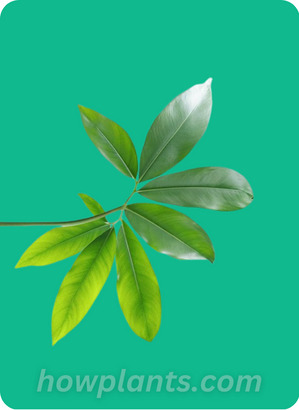
Lifespan of Philodendron Funbun
Philodendrons can live for many years, sometimes up to 50 years. The average lifespan of a philodendron is around 10 to 20 years.
Care Needs for Goeldii Philodendron
The care needs for philodendron goeldii rare are fairly simple. This plant can be kept in a pot or in a garden, and will do well in most soil types. It does best in full sun, but can tolerate some shade. Water regularly, and fertilize only when needed.
Environmental conditions best for Fun bun Philodendron
The best environmental conditions for Philodendron Goeldii are:
- Warm and humid environment
- Good light
- Airflow
Growth rate of Thaumatophyllum Spruceanum
The growth rate of Philodendron Goeldi is relatively fast and can still reach a height of eight inches and four inches wide. This plant is best suited for indoor growing, as it does not tolerate direct sunlight well, so a north-facing window is the best placement to get the best plant height and width.
Pots that are best for growing Philodendron Goldie
There are a few things to consider when choosing a pot for growing Goeldii plants. The pot should be large enough to accommodate the root system and the height of the plant, and it should be well-drained. The pot should also have a good mix of soil and sand, and the plant should be planted in the center of the pot so that the roots have room to spread.
Goeldii plant’s Pot size
The philodendron finger leaf plant requires a pot of 8 inches long and 3-4 inches wide. Pots of plastic and mud having well drainage, are best to grow it. The pot you are choosing to grow the Goeldii plant should have a maximum number of holes so that the extra amount of water will get drained out of the pot.
When to report your Finger Leaf Philodendron?
If your Philodendron Goeldii is exhibiting any of the following symptoms, it is important to report the issue to your local garden center or botanical garden:
- The leaves on your philodendron goeldii are discolored and drooping
- The philodendron goeldii is producing fewer flowers than usual
- The philodendron goeldii is displaying signs of wilting or dying
If you notice any of these symptoms on your philodendron goeldii, it is best to contact a professional to assess the situation and determine if there is a need to take any action.
Soil composition best for Goeldii Variegated Plant
The best soil composition for philodendron goeldii variegated plant is a mixture of well-drained soil and compost. The soil should be kept moist but not soggy, and the plant should be kept in a warm, sunny location.
Ideal pH for Philodendron Goeldii?
The ideal pH for philodendron goeldii is 5.0 to 7.0. It is the acidic to basic pH and normally the commercial soil is having the same pH. If the pH of your soil is too basic, you should need it to treat it with basic soda, wood ash or any other acidic ingredient in order to lower the soil. And if the pH of soil is too high then adding aluminum sulfate is the best choice.
Water requirements and when to water the Philodendron Goeldii Juvenile
Water requirements of Philodendron Goeldi juvenile vary depending on the size of the plant and the climate where it is being grown. In general, a philodendron goeldii needs about 1 inch of water per week, but the plant will tolerate a water deficit of up to 2 inches. The best time to water philodendron goeldii is during the early morning or late evening when the soil is cooler.
Temperature best for Thaumatophyllum Spruceanum
The ideal temperature for the growth of philodendron goeldii is around 70 degrees Fahrenheit.
Cold Hardiness of Spruceanum Goeldii
Goeldii is a hardy plant that can tolerate cold weather conditions. This plant can be grown indoors or outdoors in a sunny or shady location. This plant can grow up to 12 inches tall and wide. Philodendron goeldii is a popular houseplant because of its attractive foliage and flowers.
Light requirements for Goeldii green wonder
The light requirements for this green wonder plant vary depending on the variety, but most varieties need at least 6 hours of direct sunlight per day. Philodendrons can also handle partial sun exposure, but they will not flower as well in this situation.
Fertilizers Suitable to Goeldii
When fertilizing Philodendron, it is important to choose a fertilizer that is specifically designed for this plant. Some fertilizers that are suitable for this plant include:
- A fertilizer that is high in nitrogen
- A fertilizer that is high in phosphorus
- A fertilizer that is high in potassium
- A fertilizer that is high in calcium
It is important to give fertilizers to Philodendron Goeldii at the correct time. Fertilizers should be given when the plant is actively growing. Philodendron goeldii should not be fertilized during the winter months.
How much percentage of Humidity and Aeration is ideal?
Ideally, humidity and aeration levels for philodendron goeldii young plant should be around 60-70% and 2-3 times per week, respectively. Too much humidity can lead to root rot, while too little can cause the plant to dry out. Additionally, excessive aeration can cause the plant to become leggy and weak.
How to propagate Philodendron Goeldii?
To propagate philodendron goeldii, you will need to start with a healthy plant that you can transfer to a new pot. Once you have the plant in a new pot, you will want to water it well and fertilize it with a balanced fertilizer. You can then begin to thin the plant out by removing the oldest and weakest plants. You can also remove any damaged or diseased plants. Once you have thinned the plant out, you can repot it in a larger pot and continue to water and fertilize it.
Steps of Propagation through stem cutting in soil
To propagate philodendron goeldii through stem cutting in soil, firstly, a stem cutting must be made from a healthy stem that has at least two nodes. Secondly, the stem cutting must be soaked in a rooting hormone for at least 24 hours before planting. Finally, the stem cutting must be planted in soil and watered regularly.
Steps of Propagation through stem cutting in water
When propagating philodendron goeldii through stem cutting in water, it is important to follow these steps:
- Remove any wilted or dead leaves from the stem.
- Make a 1-inch cut along the stem, just below the leaves.
- If the cut is made in a pot, carefully lift the stem out of the pot and place it in a new pot or container of fresh water.
- If the cut is made in the ground, simply place the stem in fresh water and wait a few weeks for new growth to emerge.
Steps of propagating through Air layering technique
- Remove the old potting mix and soil from the philodendron.
- Fill a bucket with clean water and place it next to the philodendron.
- Cut the stem off the philodendron so that it is less than an inch long.
- Cut the leaves off the philodendron so that they are less than an inch long.
- Place the leaves and stem of the philodendron into the bucket of water.
- Gently swirl the philodendron around in the water to wet it.
- Spread a layer of potting mix on the bottom of a new pot.
- Place the leaves and stem of the philodendron onto the potting mix.
- Spread a layer of potting mix on the top of the leaves and stem.
- Place the pot on a sturdy surface and water it thoroughly.
- Place the philodendron in a sunny location and water it regularly.
Philodendron Goeldii’s Flowers size, Shape and when they grow?
Philodendron goeldii’s flowers are typically about two inches wide and three inches long. They typically grow in clusters of three to six flowers. The flowers will typically bloom in late spring or early summer.
Toxicity status of Philodendron Plants
The toxicity status of the philodendron goeldii plant is unknown. However, because this plant is potentially poisonous, it should not be grown in close proximity to other plants. If ingested, philodendron goeldii could cause stomach pain, vomiting, and diarrhea.
Pest that can attack Philodendron Thaumatophyllum
The pest that can attack philodendron goeldii is the mealybug. Mealybugs are small, brown, oval-shaped insects that feed on plant sap. They can cause damage to philodendron goeldii by sucking the sap out of the plant, causing the leaves to turn yellow and fall off. Mealybugs are common in warm climates, and can be controlled by using an insecticide or by removing the infected plants.
Fungus Giants
The fungus grows on the leaves and stems of the philodendron, and can cause them to turn brown and die. If you notice your philodendron is losing leaves or has brown patches on its stem, it is important to take it to a qualified plant specialist for diagnosis and treatment. If the fungus is not treated, the philodendron will die.
White Flies
White flies are small, wingless insects that feed on plant sap. They can attack philodendron goeldii, causing leaves to turn yellow and drop. To get rid of white flies, you can use an insecticide or a natural insecticide.
Mealy Bugs
Mealybugs are small, brown, flat insects that feed on plant sap. They produce a sticky substance that they spread on the leaves of the philodendron goeldii. Mealybugs can cause the plant to lose its leaves and die. There are several ways to get rid of mealybugs. You can use an insecticidal soap, a horticultural oil, or a pyrethrum-based insecticide. You can also use a vacuum cleaner to remove the mealybugs from the plant.
Root rot
Root rot is a fungus that attacks the roots of philodendron goeldii. The fungus can cause the roots to rot and die, which can lead to the plant’s death. To prevent root rot, keep the philodendron goeldii moist and well-watered, and avoid overwatering. If root rot is detected, remove the affected roots and treat the plant with a fungicide.
Yellowing of Leaves
The leaves of the finger leaf Philodendron Atabapoense start to become yellow because of a deficiency of chlorophyll or it may also occur if the plant is not receiving enough light. Deficiency of water meight also be a reason for the yellowing of leaves. To treat yellowing of leaves, you can add a source of chlorophyll to the plant’s environment.
Comparison of Philodendron Goeldii with other Plants
Philodendron Goeldii VS Philodendron Brantianum
Philodendron goeldii is a species of philodendron that is native to the eastern coast of Africa. Philodendron brantianum is a species of philodendron that is native to the western coast of Africa.
Both species are easy to grow and have similar care requirements. They both need well-drained soil and plenty of light. They both prefer warm temperatures, but Philodendron goeldii can tolerate cooler temperatures than Philodendron brantianum.
Both species are fragrant, but Philodendron goeldii is slightly more fragrant than Philodendron brantianum. Both species are easy to propagate from cuttings.
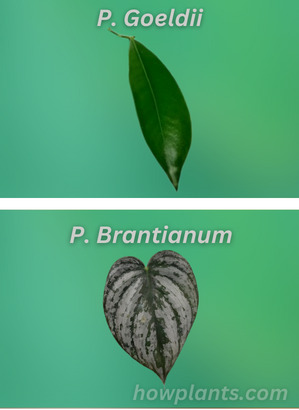
Philodendron Goeldii VS Philodendron Bipinnatifidum
There is a lot of debate surrounding the best philodendron for the home garden, but one of the most popular choices is the philodendron goeldii. This plant is easy to grow and has a long blooming period, making it a great choice for those who want to enjoy a showy display of flowers. However, if you are looking for a smaller, more manageable plant, the philodendron bipinnatifidum may be a better option for you. This plant is also easy to care for, requiring little water or fertilizer and providing long-lasting flowers.
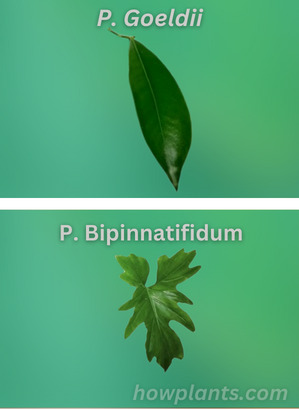
Philodendron Goeldii VS Philodendron Ernestii
There are two types of philodendrons: Philodendron goeldii and Philodendron ernestii. Philodendron goeldii is a more common type and has wider leaves. Philodendron ernestii is a more rare type and has narrower leaves.
Overall, Philodendron goeldii is a better choice for beginner growers because it is easier to care for and has a more robust growth habit. However, Philodendron ernestii has its own unique features that may be appealing to some growers, such as its narrower leaves and ability to grow in low light conditions.
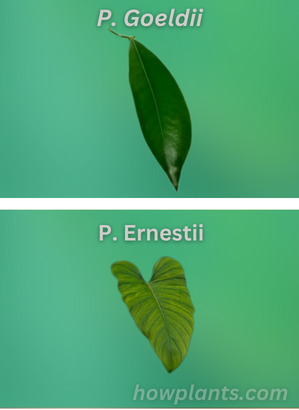
Philodendron Goeldii VS Philodendron Giganteum
The two philodendron species are both beautiful plants, but Philodendron goeldii is generally considered to be the more popular of the two. Philodendron giganteum is a bit more difficult to grow, and may require a more intensive care regimen. Both plants are excellent additions to any home or office, and make great gifts for those who love plants.
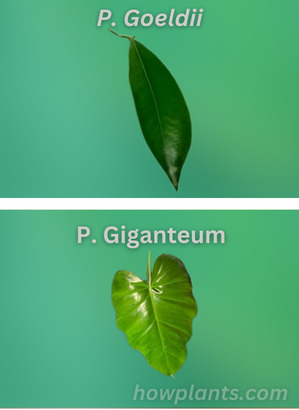
Philodendron Goeldii VS Philodendron Nobel
Philodendron goeldii is a much more popular philodendron than Philodendron nobel. Goeldii is more commonly available, has larger leaves, and has a more vibrant coloration. However, both plants are attractive and can make a beautiful addition to any indoor or outdoor garden.
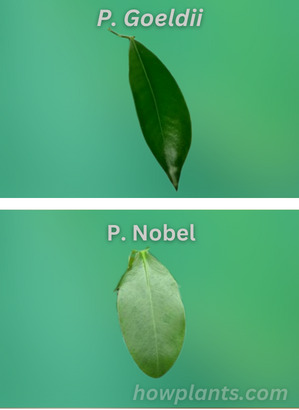
Philodendron Goeldii VS Philodendron Painted Lady
The Philodendron goeldii is a beautiful plant that can grow up to 12 feet tall. It has a long stem and large leaves. The Philodendron Painted Lady is a different type of philodendron. It has smaller leaves and a shorter stem. It is also a brightly-colored plant.
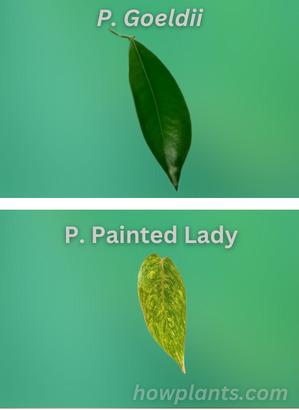
Philodendron Goeldii VS Philodendron Rio
The philodendron goeldii is a more commonly available philodendron, and is considered to be a more forgiving plant when it comes to growing conditions. The philodendron rio is a more rare and hardy species that is often used in tropical settings. Both plants can be grown indoors or outdoors, but the philodendron goeldii is better suited to cooler climates.
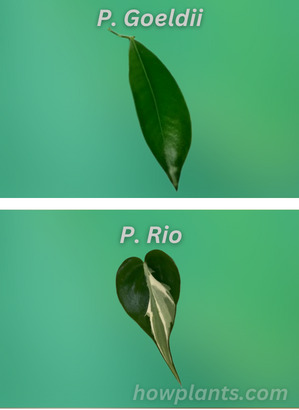
Philodendron Goeldii VS Philodendron Selloum
The two philodendrons are similar in many ways, but there are a few key differences that should be noted. First, Philodendron goeldii is a bit larger than Philodendron selloum. Second, Philodendron goeldii has more leaves and is a darker green in color. Third, Philodendron selloum has smaller leaves and a more yellow color. Finally, Philodendron goeldii is more tolerant of lower light levels, while Philodendron selloum prefers brighter light.
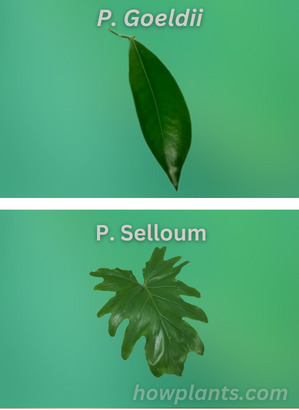
Summary
In conclusion, Philodendron goeldii is a species of philodendron that is native to Brazil. It is a slow-growing plant that can reach a height of up to 6inches and has ovate-shaped leaves with a pointed tip. The flowers are pink with a yellow center. This species is a great addition to any garden and will provide a unique and beautiful look.
